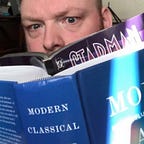DIY gravitational waves with ‘BlackHoles@Home’ project
On Citizen Science Day researchers are turning to the public for help interpreting gravitational wave data generated by the collision of binary black holes.
Science enthusiasts enthralled by the revelation of the first image of a black hole are being offered the opportunity on Citizen Science Day (13/04/19) to lend computing power to the analysis of gravitational waves generated by the collision of such spacetime objects and massive neutron stars.
The effort, which is being led by West Virginia University assistant professor Zachariah Etienne, invites the public to lend their own computers to help the scientific community unlock the secrets contained in gravitational waves observed when black holes and neutron stars smash together.
Etienne says: “As our gravitational wave detectors become more sensitive, we’re going to need to greatly expand our efforts to understand all of the information encoded in gravitational waves from colliding binary black holes.
